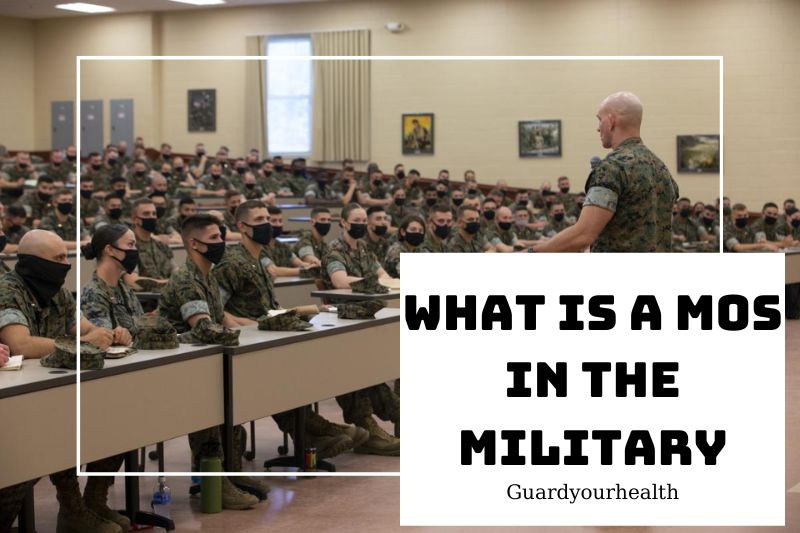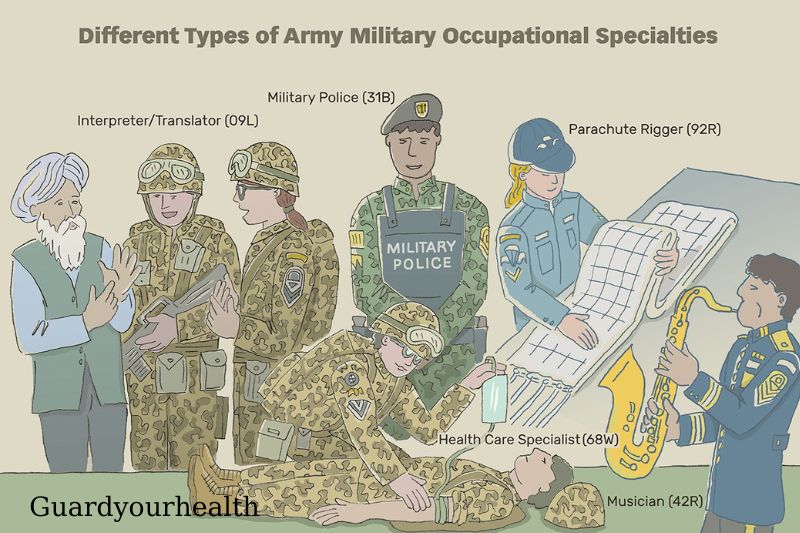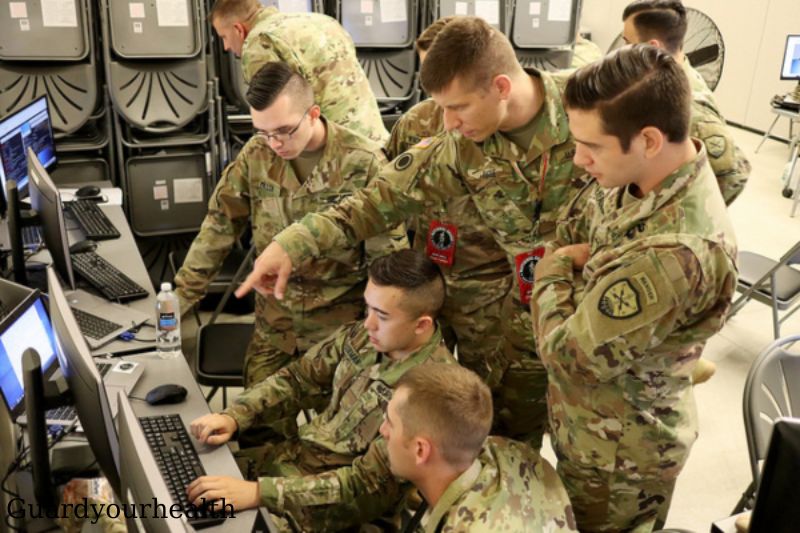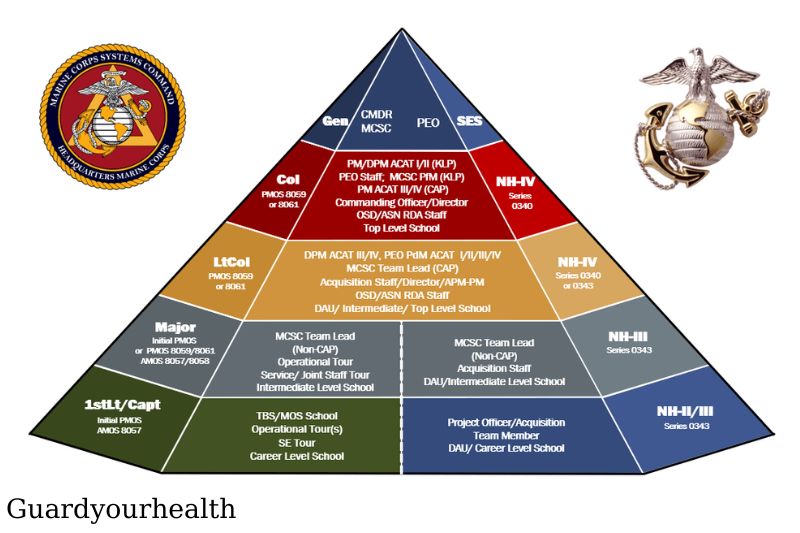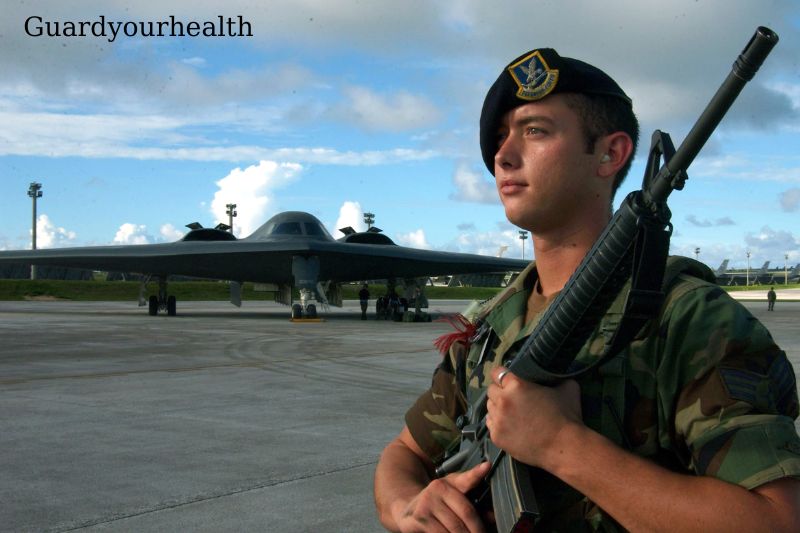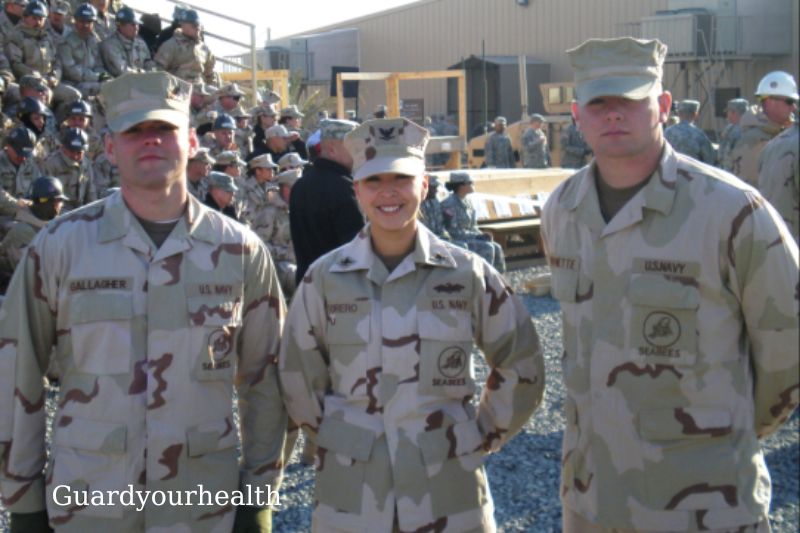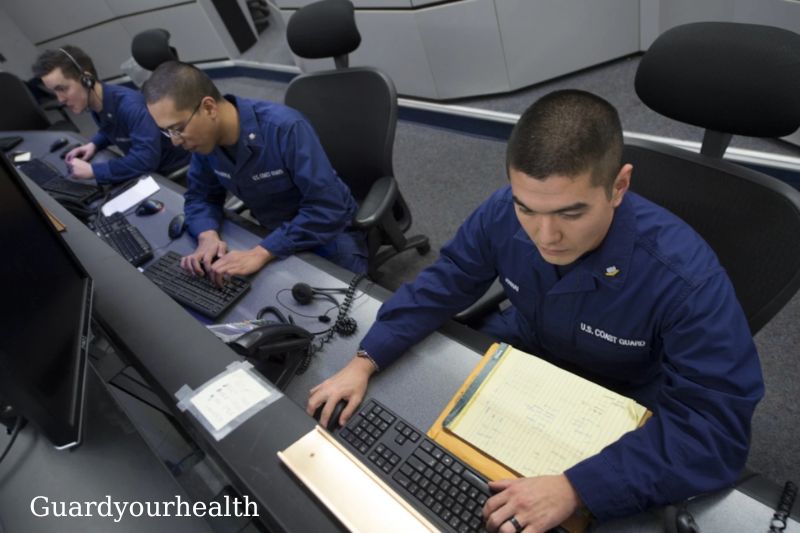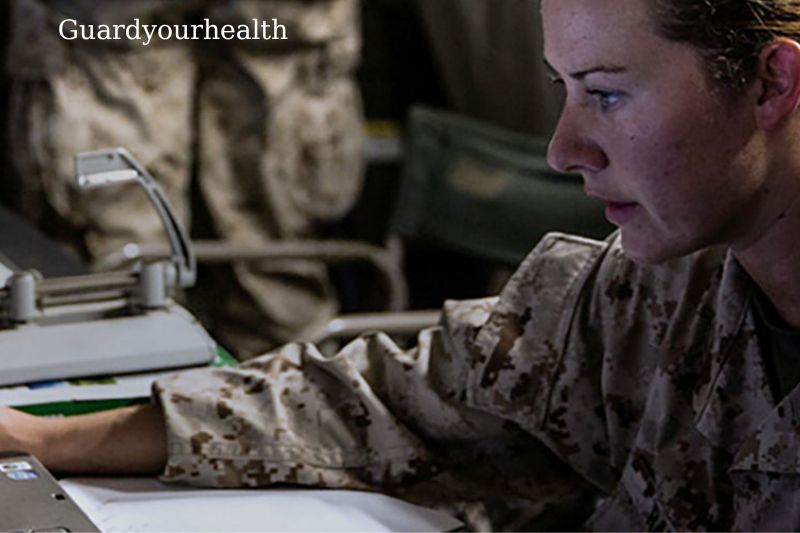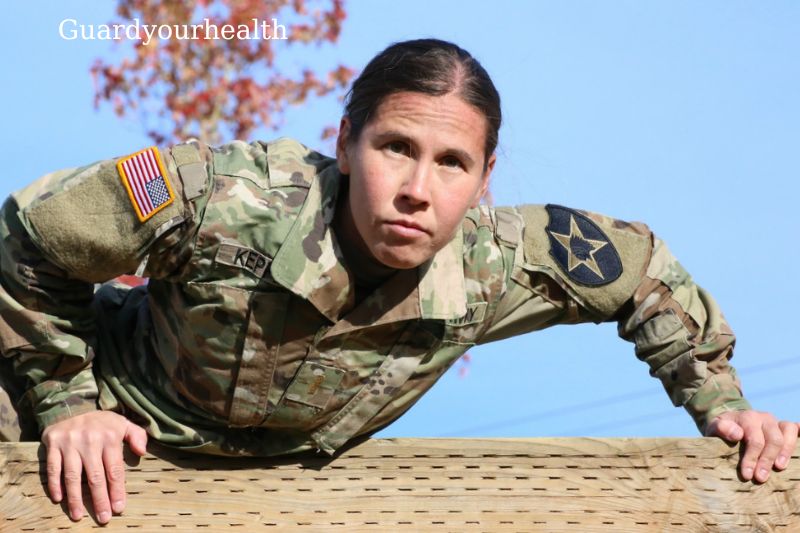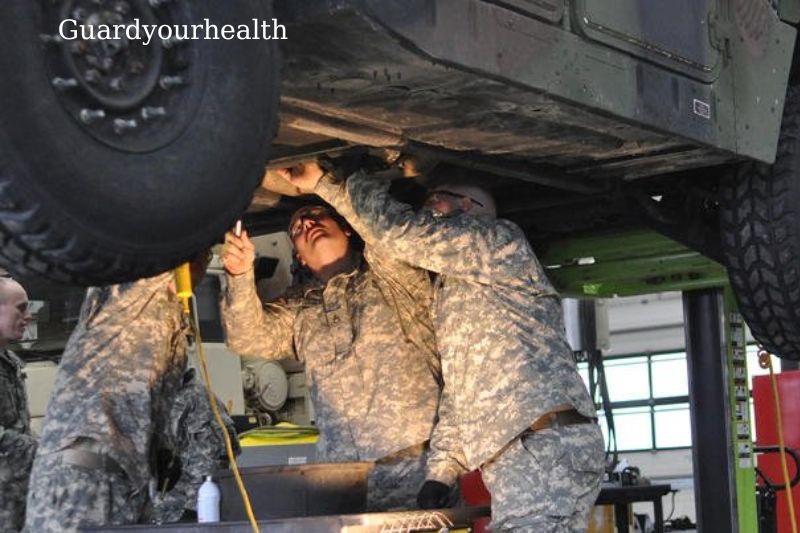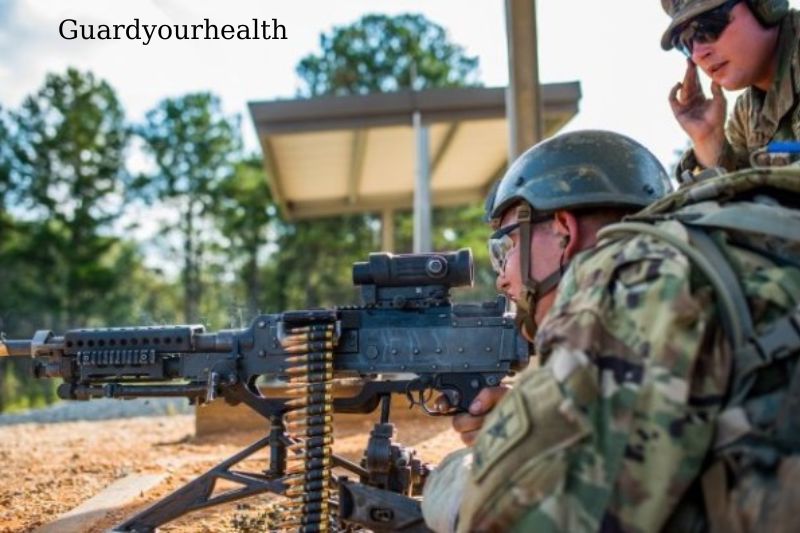A MOS, or Military Occupational Specialty, is the job classification of a soldier in the United States Army. There are over 150 different MOS’s that a soldier can have, ranging from infantry to cooks. Each MOS has its own training and certification requirements that a soldier must meet in order to be qualified for the position.
In this blog, Guardyourhealth will explore what does mos stand for, what some of the most popular MOSs are and what they entail.
What Is A MOS In The Military
MOS is an abbreviation for military occupational specialties, as discussed briefly previously. Military MOS are the positions or jobs that are available to service personnel. Across all military branches, there are about 10,000 distinct “MOS.”
To comprehend MOS, imagine it as a college major. Some MOS denote a certain skill set, whilst others are more generic. There are military-specific MOS, but there are also civilian-specific MOS, such as logistics, administration, maintenance, information technology, healthcare, and so on.
Each specialty is identified by a military code number. The code of the United States Army and Marine Corps is nine characters long. There is a distinct Air Force Specialty Codes system in the United States Air Force. The United States Navy has both a Naval Rating system and a Navy Enlisted Classification system. Like the other branches, the US Coast Guard has its own ranking system.
Specialties are classified as branches or fields. In that case, they are known as career management fields (CMFs). The first two code numbers are shared by specialties in the same group. Then there’s a letter outlining the job description.
Each service member may have a variety of occupational specialties. As a result, a DMOS, or duty military occupational specialty, is used to define a person’s principal work.
Applicants must pass the ASVAB, or Armed Forces Vocational Aptitude Battery, in order to enroll. This determines if an application is qualified and aids in determining the MOS that the candidate is most suited for.
After becoming a recruit and signing the enlistment contract, the candidate can select a MOS and begin training for that MOS. To achieve a military occupational specialty certification, all employees must complete and pass all required training (MOSQ).
The United States Army
MOS signifies the same thing in the Army as it did before. There are around 190 MOS possibilities for soldiers joining the Army. Three digits are used in the coding scheme. The first two digits indicate the field, while the last digit indicates the job within that field.
Common occupations include:
- Infantry branch (11)
- Cyber operations (17)
- Electronic warfare (29)
- Military intelligence (35)
- Financial management (36)
- Psychological operations (37)7)
United States Marine Corps
The Marine Corps MOS is four numbers long. A member can have one primary MOS and then “pick up” other MOSs. The Marine Corps has three categories of MOSs: occupational fields (1-79), miscellaneous requirement occupational fields (80XX), and reporting occupational fields (90XX).
The three categories are further subdivided into primary and non-primary MOSs. The former can then be classified as fundamental, primary, or additional, whereas the latter can be classified as necessary, free, or exceptional.
Basic MOS: Entry-level MOSs for members who have not yet completed introductory skills training. This is likewise true for new maritime transfers.
PMOs: The major indication of Marine’s abilities and expertise. Promotions are attainable on this form of MOS. Additional MOS (AMOS): An “extra” MOS for a Marine who already possesses a PMOS. With this form of MOS, promotions are not feasible.
- MOS Required (NMOS): A mandatory MOS that can only be achieved by a Marine having the associated PMOS.
- Free MOS (FMOS): Any marine, regardless of POS, can receive this form of MOS. It is concerned with skill sets that are unrelated to main skills.
- Exception (EMOS): A type of MOS that is commonly considered an FMOS but includes exceptions that necessitate a PMOS.
Some surprising and lesser-known Marine Corps MOSs include:
- Linguist (27)
- Music (55)
- Combat Camera (46)
United States Air Force
The Air Force has around 135 MOS. Enlisted personnel’s specialty code is five numbers, whereas officers’ specialty code is four digits.
The first digit of an Air Force MOS code represents a career group. There are nine career groups in total:
- Medical Professional Acquisitions & Logistics
- Investigations Specialized
- Assignments for Special Duty
- Identifiers for Special Reporting
The second digit is a letter representing the career field, and the third is a number representing the career field subdivision or work functional area. The member’s skill level is shown by the fourth digit. There are nine skill levels.
When a person enrolls in technical school, the “helper” level is a “1.” When he or she graduates, he or she is designated as an “apprentice” with a “3.” Then, with a “5” at the “journeyman” level, the individual can advance into an airman. This is generally followed by a period of classes and on-the-job training, which can last anywhere from 12 to 18 months. When a person is promoted to staff sergeant, he or she is termed a “craftsman” and receives a “7.” A “9” indicates that you have been advanced to the “superintendent” skill level.
Finally, the fifth digit is a number for another job division within the same functional area. These can be reinforced by prefixes such as “A” or “B” for special abilities.
United States Navy
The Navy has 93 MOSs available. However, the correct title for the positions is “ratings.” These evaluations are further subdivided and categorized as “community.” Each rating will have a distinct minimum ASVAB test score requirement. Among those with the most stringent requirements are:
Aviation Electronics Technician (AT) – This qualification requires a minimum score of 222. You will be responsible for maintaining all electrical components of an aircraft, including combat sensors, radar, communication, and navigation.
Air Traffic Controller (AC) – A minimum score of 220 is necessary for this grade. This employment requires you to work in airport control towers and control centers. You are responsible for tracking aircraft movements, monitoring flight paths, interacting with the aircraft, and interpreting radar displays.
Airman (AN) – A minimum score of 185 is necessary for this rank. Your responsibilities in this role include servicing and repairing airplanes as well as flight-related equipment. You also assist with aircraft landing and takeoff.
Aviation Boatswain’s Mate (AB) – A minimum score of 184 is necessary for this certification. You are the “mates” who run about the flight decks of aircraft carriers. You particularly help with aircraft launch and recovery, as well as refueling and traffic control.
United States Coast Guard
The Coast Guard, like the Navy, has a rating system similar to the Army and Marine Corps’ MOS. The aviation group, the administrative and scientific group, the engineering and hull group, the deck and weapons group, and the command group are the five major groups.
Aviation maintenance technician, aviation survival technician, and avionics electrical technician are all professions in the aviation group.
Health and services technicians, marine science technicians, a musician, public affairs experts, a storekeeper, cuisine specialists, and yeoman jobs are all part of the administrative and scientific group.
Damage and control man, electrician’s mate, electronics technician, machinery technician, information systems technician, and diver jobs are all part of the engineering and hull group.
Boatswain’s mate, maritime law enforcement expert, gunner’s mate, operations specialist, and intelligence specialist are all jobs in the deck and weapons group.
Each Coast Guard rating is represented by a specialty emblem, which is worn on the left sleeve of a dress uniform. Only commissioned officers, who do not have ratings, are exempt.
Basics of the Military Occupational Specialty Code
The first thing most new recruits learn is that each branch of military service has its own nomenclature for describing a MOS. The United States Army uses MOS, whereas the Air Force refers to its own occupational specialization list as an “Air Force Specialty Code,” or AFSC.
The Navy refers to their version of this system as “ratings” (thus the Navy expression, “Choose your rate, choose your fate”), while the official word for individuals who join the Navy in the enlisted grades is the Navy Enlisted Classification System.
For the sake of this essay, we’ll refer to ALL such systems as MOS, but keep in mind that each branch of service has its own way of classifying and allocating military employment.
Not all military vocations include fighting, search and rescue, ammunition, or parachute operations. But they must all have some kind of categorization code, training and performance criteria, and so on. The MOS is an organizational concept that serves to inform how the entire process is managed.
MOS Nuances
A MOS is not always a job description for a particular type of employment. What does this mean? The Air Force has a Public Affairs specialty designation, although Public Affairs may imply anything from being a military reporter or photographer to giving base tours and doing public relations work with civilian organizations who need access to the site.
Public Affairs might include writing for base newspapers or publications (famous Gonzo writer Hunter S. Thompson got his start as an Air Force enlisted man writing for a base newspaper) or supporting other departments on base with requests for tours, base access, and so on.
When reviewing a list of military specializations, keep in mind that the broad classification of labor isn’t always indicative of the kind of jobs you’ll be allocated. To give you a clearer sense of what this entails, below is a (very limited) l list of Marine Corps Military Occupational Specialty descriptions:
- Ammunition and Explosive Ordnance Disposal
- 26 — Signals Intelligence/Ground Electronic Warfare
- 27 — Linguist
- 28 — Ground Electronics Maintenance
- 30 — Supply Administration and Operations
- 31 — Traffic Management
- 33 — Food Service
- 34 — Financial Management
- 35 — Motor Transport
- 41 — Marine Corps Community Services
- 43 — Public Affairs
- 44 — Legal Services
- 46 — Combat Camera
- 55 — Music
- 57 — Chemical, Biological, Radiological and Nuclear Defense
- 58 — Military Police and Corrections
- 59 — Electronics Maintenance
Those numerals on the left? They represent the MOS’s position on the list, from 1 to 80, in terms of the number of general MOS options provided by that branch of military service. These occupations are not listed in any particular sequence, such as “from one to ten top jobs,” but rather to organize and categorize professional categories.
And how does the Marine Corps define the occupations listed above? Remember that these are broad descriptions, not a list of specific day-to-day duties. Consider how the Marine Corps explains the Communications MOS (not stated above):
“Marines in the communications area are routinely relied upon to build, install, connect, and operate communication networks.” Preventative maintenance on both software and hardware systems is also necessary across a wide range of analog and digital systems.”
Who Gets An MOS?
All recruits will be allocated a job at some time, but when and how depends on the circumstances.
The recruiter may offer you the opportunity to choose a military career. However, some recruits do not attend boot camp with a “guaranteed job” and must choose their MOS or AFSC, etc., at some time during basic training.
You will not finish basic training without a job assignment since the majority of new recruits, and BMT graduates will attend “tech school” or additional training in the MOS given.
This implies that Security Forces will receive specialized training for their MOS, military IT professionals and linguists will attend special training courses, and so on. In the past, a limited proportion of basic training graduates went immediately to their first assignment and received on-the-job training, or they attended a very short technical training school with a higher emphasis on OJT.
Most recruits should try to get guaranteed employment before going to basic training. This is not always possible, but it is far preferable to choose your MOS in the comfort and stress-free setting of your recruiting office rather than the high-pressure environment of boot camp.
Who Gets the Best MOS Options?
There’s no other way to put it than this: military recruits who perform well on the Armed Services Vocational Aptitude Battery (ASVAB) have the most alternatives available to them. ASVAB results rank each candidate in a variety of categories, and those who perform poorly in one or more of them have fewer career alternatives than those who perform well in all areas of the test.
The goal is to study hard for this test since it is meant to weed out people who aren’t fit out for certain occupations that demand certain talents. For example, if you struggle with mathematics, your ASVAB results may exclude you from consideration for positions in military finance, certain personnel positions, and so on.
If you perform poorly in other parts of the exam, you may be excluded from consideration for some administrative positions, intelligence work, or other MOS alternatives that need competitive scores. Inquire with your recruiter about the best tools for preparing for the ASVAB, and be sure to specify what kind of job you are most interested in performing and which aspects of the exam may be applicable to those career sectors.
FAQs
1. What MOS pays the most?
- Captain.
- First officer.
- Intelligence specialist.
- Aircraft mechanic.
- Army IT professional.
- Contract recruiter.
- Information security analyst.
- Flight instructor.
2. How long is MOS training in the Army?
The majority of the resident phases are approximately eight weeks in length, with high-density military occupational specialties (MOS) ALCs being provided to Soldiers at the home station using Mobile Training Teams.
3. How many MOS can you have?
Yes, a Service member can have more than one MOS, a Primary, Secondary and Alternate. For qualification, SM must attend the training for each MOS. However, the Primary MOS must be the duty position that SM is in. SM has an admin MOS (42A) as primary and military police (31B) MOS as secondary
4. What is the easiest branch of the military?
If you want to know more information about this question, please click What Is The Easiest Military Branch To Get Into?
Conclusion
In conclusion, a Mos is a Military Occupation Specialty. There are many different types of mosques available in the military, and each one has its own set of training and responsibilities. Mos’s are an important part of the military, and they help to keep the military organized and efficient. Thank you for reading.

